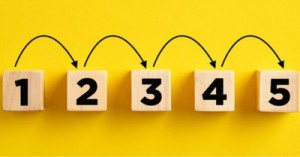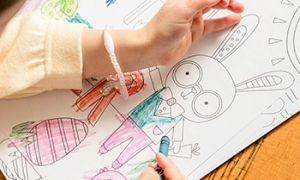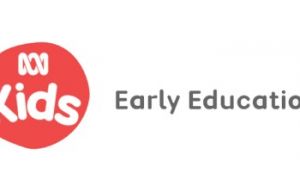Involving children in documentation in early childhood education can be a powerful way to engage them in their own learning process. The following article provides information on Strategies Involving Children In Documentation and Multimodal Representations.
Strategies Involving Children In Documentation
-
Child-Led Observations: Encourage children to observe and document their own activities. Provide them with tools like cameras, notebooks, or drawing materials to record their experiences and observations.
-
Interactive Displays: Create interactive displays where children can add their own work, photos, or notes. This can be a collaborative space where they contribute to the documentation process.
-
Storytelling and Narratives: Involve children in creating stories or narratives about their learning experiences. This can be done through drawings, writing, or verbal storytelling, which can then be documented and displayed.
-
Reflection Sessions: Hold regular reflection sessions where children can discuss what they have learned and how they felt about their activities. Document their reflections and use them to inform future planning.
-
Digital Documentation: Use digital tools like tablets or computers to allow children to document their learning. They can take photos, record videos, or create digital portfolios that showcase their progress.
-
Peer Documentation: Encourage children to document each other's activities. This can foster a sense of community and collaboration, as well as provide different perspectives on the learning process.
-
Incorporate Children's Voices: Ensure that children's voices are heard in the documentation. Include their quotes, thoughts, and ideas in the records to make the documentation more meaningful and reflective of their experiences.
By involving children in the documentation process, educators can create a more engaging and reflective learning environment that values children's perspectives and contributions.
Multimodal Representations
Multimodal representations involve using multiple modes of communication, such as writing, sound, and images, to represent and convey information. This approach is particularly effective in early childhood education, as it allows children to explore, represent, and communicate their thinking and learning in diverse ways.
-
Diverse Modalities: Children can use various tools like pens, pencils, clay, music, and digital devices to document their learning. This variety helps cater to different learning styles and preferences.
-
Digital Integration: Incorporating digital technologies, such as iPads and digital pencils, can enhance children's ability to document and share their ideas through images, videos, drawings, music, and voice.
-
Empowerment and Choice: Allowing children to choose their preferred modes of documentation empowers them and encourages self-efficacy. They can evaluate and articulate their reasons for selecting specific modalities.
-
Enhanced Learning: Using multiple modes of representation can improve children's literacy, numeracy, and critical thinking skills. It also supports scientific reasoning and spatial understanding.
-
Collaborative Learning: Multimodal representations foster a collaborative learning environment where children can share their learning with peers and educators, creating a rich and interactive educational experience.
By embracing multimodal representations, educators can create a more engaging and effective learning environment that supports children's diverse ways of thinking and communicating.
Further Reading
Guidelines For Documenting In Early Childhood Services
The Planning Cycle To Document Children's Learning
Pedagogical Documentation
References:
Documentation What, Why and How, ACECQA
Children's Documentation, Research Net







 As an Educator in Australia, your pay rate falls under the Children’s Services Award 2010. This award states the minimum amount that an employer can
As an Educator in Australia, your pay rate falls under the Children’s Services Award 2010. This award states the minimum amount that an employer can When working as a qualified Early Childhood Teacher (with a university degree) within a service, your rate of pay will come from the Educational Services
When working as a qualified Early Childhood Teacher (with a university degree) within a service, your rate of pay will come from the Educational Services When working as a Diploma Qualified Educator your pay rate is from the Children's Services Award 2010. This Award states your minimum rate of pay
When working as a Diploma Qualified Educator your pay rate is from the Children's Services Award 2010. This Award states your minimum rate of pay When working as a Cert 3 Qualified Educator, your pay rate is from the Children's Services Award 2010. This Award states your minimum rate of
When working as a Cert 3 Qualified Educator, your pay rate is from the Children's Services Award 2010. This Award states your minimum rate of Educational Leaders play a crucial role in their early childhood service by ensuring that the educational program aligns with best practices and supports the holistic
Educational Leaders play a crucial role in their early childhood service by ensuring that the educational program aligns with best practices and supports the holistic In early childhood education and care, ratios are more than a technicality—they are a frontline safeguard. Every child deserves responsive supervision, emotional connection, and developmental
In early childhood education and care, ratios are more than a technicality—they are a frontline safeguard. Every child deserves responsive supervision, emotional connection, and developmental Here’s a comprehensive Mobile Phone and Smart Watch Policy tailored for early childhood education and care (ECEC) services in Australia, aligned with the latest 2025
Here’s a comprehensive Mobile Phone and Smart Watch Policy tailored for early childhood education and care (ECEC) services in Australia, aligned with the latest 2025 With the new national child safety reforms kicking in on 1 September 2025, early childhood services like yours have a real opportunity to lead the
With the new national child safety reforms kicking in on 1 September 2025, early childhood services like yours have a real opportunity to lead the The Sea of Fish Challenge is a national initiative that invites children, educators, families, and communities to create and display fish artworks as a symbol
The Sea of Fish Challenge is a national initiative that invites children, educators, families, and communities to create and display fish artworks as a symbol Across the early childhood education and care sector, educators are sounding the alarm: current staffing ratios are insufficient to deliver safe, meaningful, and developmentally appropriate
Across the early childhood education and care sector, educators are sounding the alarm: current staffing ratios are insufficient to deliver safe, meaningful, and developmentally appropriate


